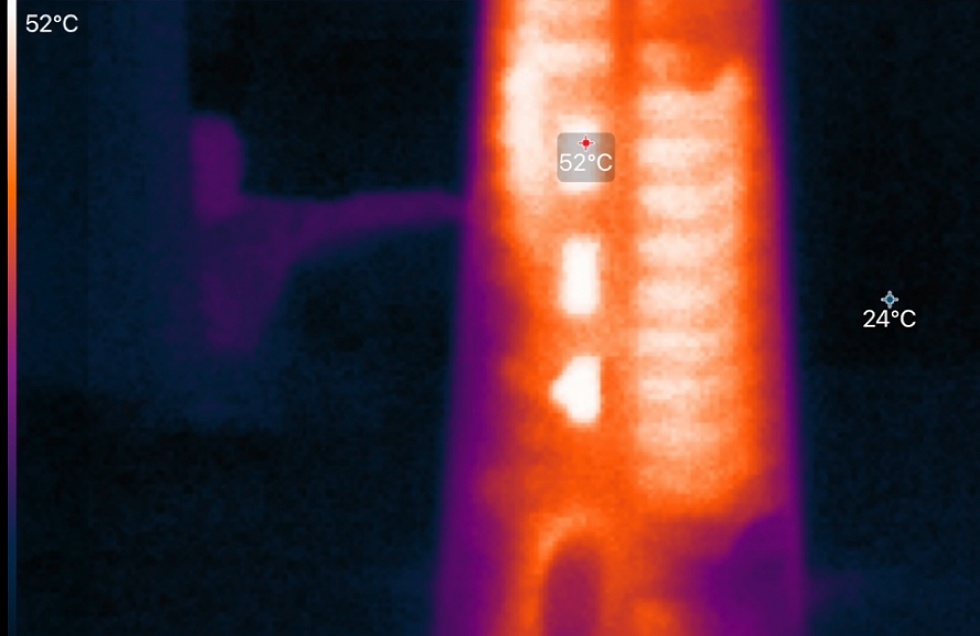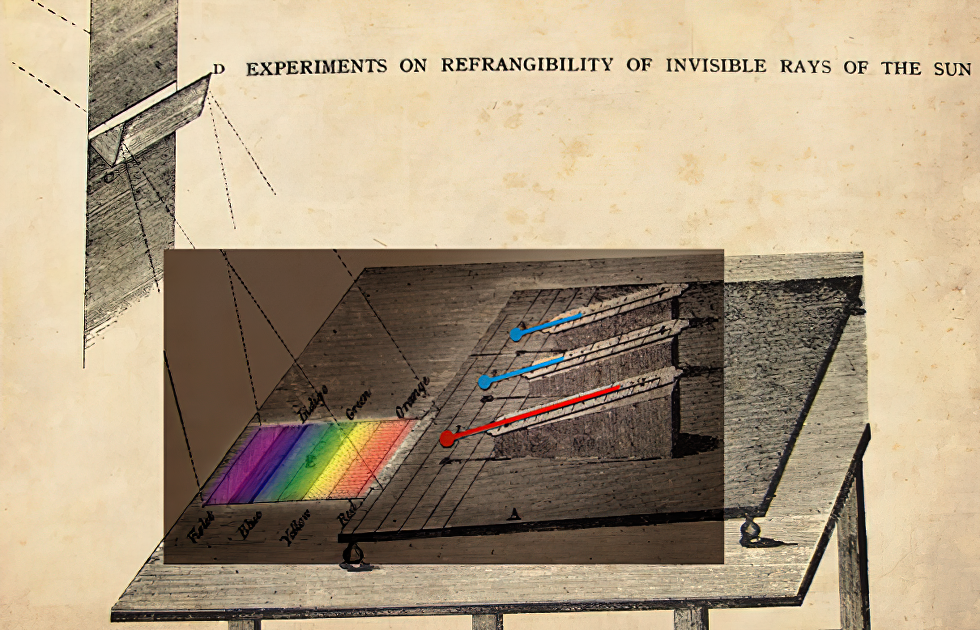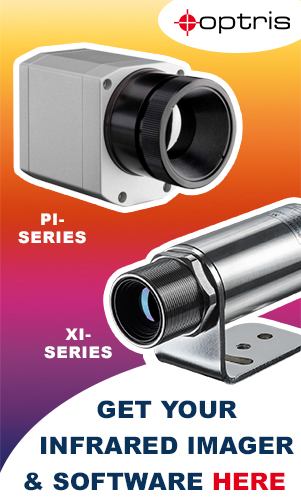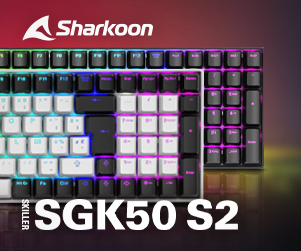In view of the “measurements” with thermal imaging cameras or equivalent smartphones that have appeared again and again lately, I want to bring last year’s article forward again today to show you the complexity of the matter and to explain why measurement is not the same as colorful imaging. One can “measure” more than one really experiences in facts, if the most important rules and basics are permanently disregarded.
It’s a bit like when the first laser printers were introduced to the PC: everyone suddenly thinks they are a trained graphic designer and simply designs their own flyers and brochures. The products of such overconfidence still adorn many a snack bar today, and the easy-to-use technology, including software, tempts even laymen to think they are little Michelangelos. With thermography and non-contact measurement it is unfortunately no different and so unfortunately almost everyone takes the colorful little pictures presented on YouTube with so-called infrared images far too seriously, although they are actually only thermal snapshots without any accuracy. I would like to dispel these myths today, because many such publications put what is in itself a very good measuring method in a completely false light.

Important preface
It is not the technique itself that is inaccurate or inappropriate, it is almost always the equipment and the basic knowledge of the user that fails! This is not meant to be a scolding of colleagues or a devaluation of the tools used, but to be fair we have to distinguish between a simple thermal image for information purposes (e.g. searching for hotspots or thermal and cold bridges) and a real measurement that really deserves its name. Everything else is fraud on the reader or viewer and ultimately on oneself. Infrared cameras versus infrared scanners? I’ll explain the difference to you today!
Yes, it really is rotationally necessary once again to explain the difference between methodical and pre-planned work, and simply “pointing” with cheap handheld or IR cell phone snapper. All too often the results of inaccurate infrared recordings are sold as measurements and irrefutable facts, which unfortunately have nothing to do with reality. It doesn’t matter whether you measure graphics cards, processors, mainboards or entire devices such as notebooks or game consoles – the basics and mistakes made are always the same.
This time, of course, it’s all based on a certain event on YouTube, because I’m always annoyed how thoughtlessly people handle the IR measurement on a Playstation 5 (picture above), for example, and usually overestimate themselves grandiosely. Reach is no guarantee of quality, but in the end everyone has exactly the audience they deserve. Shitstorm included.
Thermography – Important basics explained simply
I’m deliberately making it simple for you and breaking the basics down to the bare essentials, because not all of you are technicians. I can’t spare you a bit of theory to understand the whole thing, but it can (hopefully) be done in a reasonably entertaining way. Therefore, let’s start simple and first look back into the past. It is the year 1800 and the musician and astronomer Wilhelm Herschel (1738-1822) is in a bad mood. That’s when he decides to interrupt his current experiment and go out for a bite to eat first, because there were no delivery services yet.
Herschel was a good observer and his telescopes are still known today as well as his important discoveries in the field of astronomy. But what does all this have to do with today’s infrared measurement technology? Herschel is testing something very special on this sunny morning. He lets light shine through a prism and thus conjures up a kind of rainbow on the work table. He uses the white light, thus broken down into its individual spectral ranges, to place a thermometer in each of the visible color sections to measure the different intensities of the thermal radiation. But research makes you hungry, as we all know, and so before leaving the room he puts the thermometers back in the stand, which happens to be just below the red area, and goes to lunch in a hurry.

When he comes back and, purely by chance, takes a look at the thermometers, he can’t believe his eyes: he can read values that are significantly higher than what he had just measured in the visible spectrum! So there had to be something outside this spectrum and below the red border area, which cannot be seen but can be measured and felt: The infrared area. And so, in the end, a love of order, hunger and good powers of observation are the rather accidental trigger for a completely new technique.
But what exactly did Herschel see? If we take a quick look at the following diagram, we can see that there are still large areas both below and above the visible light that can only be detected by measurements, because our eyes are simply not suitable for this. Today, however, we are only interested in the longer-wave range below red light, which is why it is also called the infrared range. The hard radiation up to the gamma range we push aside mentally simply times.

Aha, good old thermal radiation then! You can feel it (always appreciated) – indirectly or directly with occasional ouch effects – and of course measure it. Normal thermometers actually need direct contact, but we can’t just shove mum’s mercury thermometer into the graphics card. Therefore, non-contact measurement always plays a role when direct contact via sensors and the like is not possible or expedient. Let’s remember that, please.
I have often used the term spectrum, but what does it mean? In the end, it is nothing more than the intensity of a mixture of electromagnetic waves as a function of wavelength or frequency. All in all, it covers an immense wavelength range of about 23 powers of ten(!), but differs in individual sections by the origin, generation and application of the radiation. It is the same, however, that all types of this radiation are subject to similar laws concerning, for example, diffraction, refraction, reflection and polarization. But more about this on the next pages with the measurement errors, but please remember these laws, because this is exactly where almost everyone quickly makes glaring errors without knowing it!
The actual infrared spectral range extends from the lower end of the visible spectral range (about 0.78 μm) to beyond wavelengths of 1000 μm. For our infrared temperature measurement, however, only the wavelength range from 0.7 to 14 μm is relevant, since the energy quantities outside this range are simply too low to be detected by commercially available sensors. Which brings us elegantly back to the real infrared camera I use.


































43 Antworten
Kommentar
Lade neue Kommentare
Urgestein
Veteran
Urgestein
Urgestein
1
Veteran
Urgestein
Mitglied
Urgestein
Urgestein
1
Urgestein
1
Urgestein
Urgestein
Urgestein
Mitglied
Mitglied
Urgestein
Alle Kommentare lesen unter igor´sLAB Community →